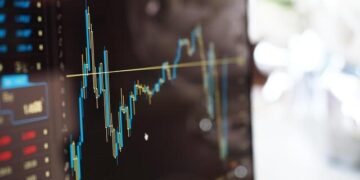In recent decades, America’s economic landscape has undergone profound transformations, reshaping industries, workforce dynamics, and global trade relations. A letter featured in The Republic News highlights the significant shifts that have redefined the nation’s financial framework, underscoring both challenges and opportunities ahead. This article explores the key factors driving these changes and their impact on everyday Americans.
America’s Economic Transformation Drives New Market Dynamics
The evolving landscape of the American economy reflects a profound shift from traditional industries toward innovation-driven sectors. Technology, renewable energy, and health care are spearheading this transformation, reshaping market priorities and consumer behavior. Small businesses and startups are capitalizing on new opportunities created by advances in artificial intelligence, automation, and sustainable development, fostering a more dynamic entrepreneurial environment. As a result, labor markets are undergoing realignment, emphasizing skills in coding, green technology, and digital marketing over manufacturing or manual trades.
New economic dynamics have also altered investment patterns and consumer demand, with significant impacts felt across various industries. Key factors influencing this shift include:
- Increased emphasis on sustainability: Companies prioritizing eco-friendly practices experience greater market support.
- Digital infrastructure expansion: Growth in e-commerce and remote work has accelerated digital economy growth.
- Changing demographic trends: Younger generations demand more socially responsible business behavior.
| Sector | Growth Rate (2023) | Market Drivers |
|---|---|---|
| Technology | 8.7% | AI, Cloud Computing |
| Renewable Energy | 12.4% | Green Policies, Consumer Demand |
| Healthcare | 6.1% | Demographics, Telemedicine |
In-depth Analysis of Job Sector Shifts and Consumer Behavior
The American job market has witnessed a profound transformation over the past decade, driven by technological advancements and shifting economic priorities. Traditional manufacturing roles have sharply declined, while sectors such as technology, healthcare, and renewable energy have surged. This pivot is not just altering employment landscapes but also reshaping the nation’s demographic and skill requirements. Workers are increasingly required to adapt, seeking upskilling opportunities or transitioning to entirely new industries to maintain economic stability.
Consumer habits have evolved in tandem with these labor market changes, reflecting broader sociocultural and economic trends. Categories such as e-commerce, subscription-based services, and digital entertainment have seen exponential growth, while brick-and-mortar retail and traditional media face persistent declines. Key factors influencing this shift include:
- Increased digital connectivity and smartphone penetration
- Growing environmental and social awareness driving ethical consumption
- The rise of remote work boosting demand for home-centric products and services
| Job Sector | 2010 Employment (%) | 2024 Employment (%) | Growth Trend |
|---|---|---|---|
| Manufacturing | 20 | 12 | ↓ Decline |
| Technology | 8 | 18 | ↑ Rapid Growth |
| Healthcare | 15 | 21 | ↑ Steady Growth |
| Renewable Energy | 2 | 7 | ↑ Emerging Sector |
Policy Recommendations to Foster Sustainable Growth and Stability
To navigate the complexities of today’s economic landscape, policymakers must prioritize long-term sustainability over short-term gains. This involves bolstering investment in green technologies and infrastructure, which not only addresses environmental concerns but also spurs job creation in emerging sectors. Furthermore, enhancing workforce development programs with a focus on digital skills will ensure American workers remain competitive in a rapidly evolving job market. Emphasizing inclusive growth through targeted support for small businesses and underserved communities will foster a more resilient economy capable of withstanding future shocks.
Reforming fiscal and monetary policies is equally critical. Strategic adjustments in tax codes can incentivize innovation while safeguarding middle-class prosperity. At the same time, maintaining prudent inflation controls will stabilize purchasing power for consumers. Below is a snapshot of priority actions that could form the backbone of a sustainable growth strategy:
| Policy Area | Key Action | Expected Impact |
|---|---|---|
| Green Technology | Increase R&D funding | Boosts clean energy adoption |
| Workforce Development | Expand digital training programs | Reduces skill gaps |
| Tax Reform | Incentives for small businesses | Drives local economic growth |
| Monetary Policy | Maintain inflation targets | Preserves purchasing power |
Final Thoughts
As America’s economy continues to evolve in response to global shifts, technological advancements, and policy changes, understanding these transformations remains crucial for both policymakers and citizens alike. The Republic News will continue to monitor these developments closely, providing in-depth analysis and reporting on the factors shaping the nation’s economic future. Stay informed as we track how these changes impact communities and industries across the country.































